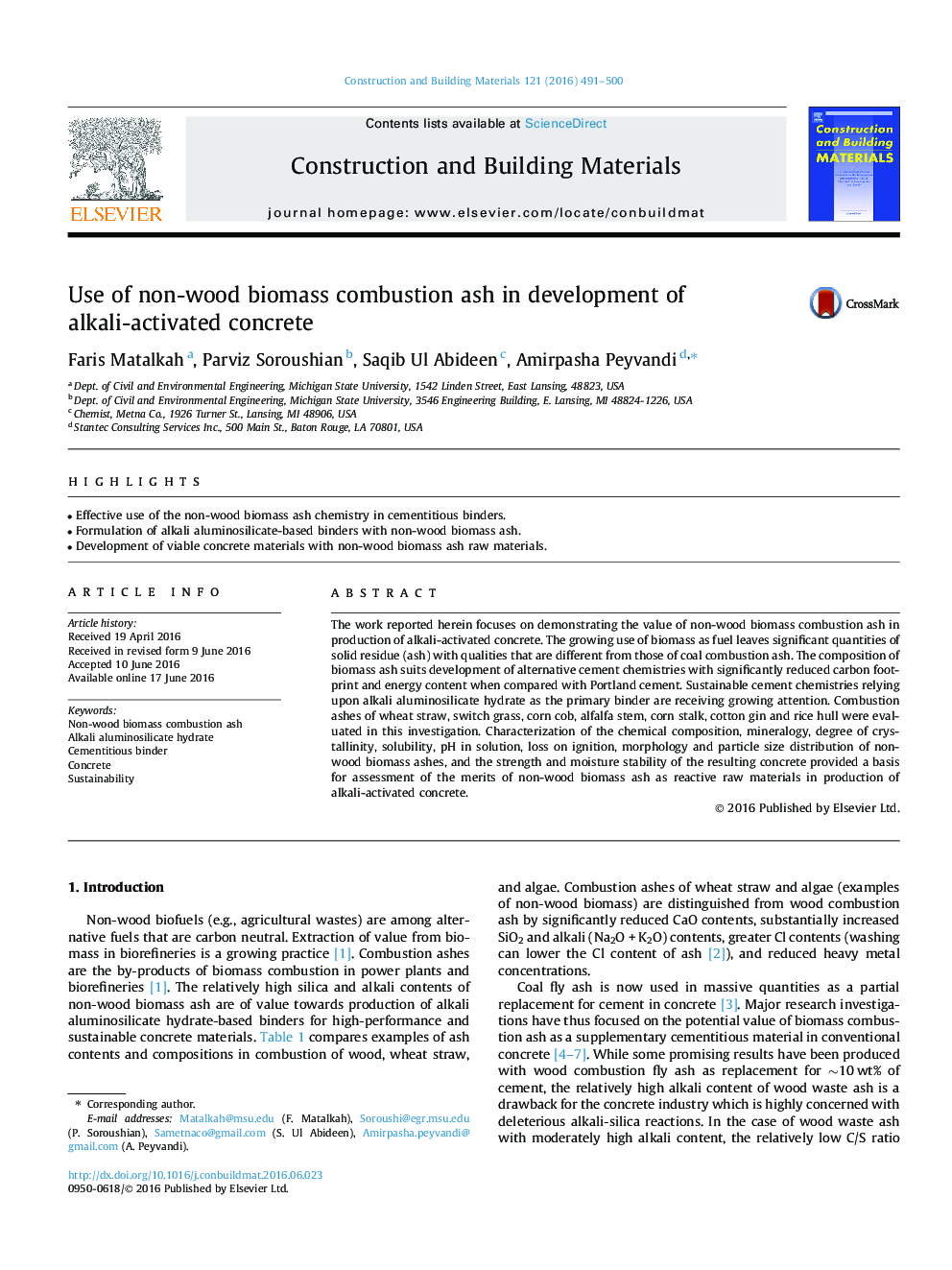| Article ID | Journal | Published Year | Pages | File Type |
|---|---|---|---|---|
| 6718556 | Construction and Building Materials | 2016 | 10 Pages |
Abstract
The work reported herein focuses on demonstrating the value of non-wood biomass combustion ash in production of alkali-activated concrete. The growing use of biomass as fuel leaves significant quantities of solid residue (ash) with qualities that are different from those of coal combustion ash. The composition of biomass ash suits development of alternative cement chemistries with significantly reduced carbon footprint and energy content when compared with Portland cement. Sustainable cement chemistries relying upon alkali aluminosilicate hydrate as the primary binder are receiving growing attention. Combustion ashes of wheat straw, switch grass, corn cob, alfalfa stem, corn stalk, cotton gin and rice hull were evaluated in this investigation. Characterization of the chemical composition, mineralogy, degree of crystallinity, solubility, pH in solution, loss on ignition, morphology and particle size distribution of non-wood biomass ashes, and the strength and moisture stability of the resulting concrete provided a basis for assessment of the merits of non-wood biomass ash as reactive raw materials in production of alkali-activated concrete.
Keywords
Related Topics
Physical Sciences and Engineering
Engineering
Civil and Structural Engineering
Authors
Faris Matalkah, Parviz Soroushian, Saqib Ul Abideen, Amirpasha Peyvandi,
